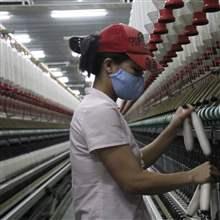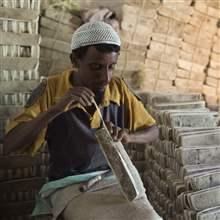Manufacturing and service industries tend to concentrate in cities and industrial clusters. In Vietnam, for example, large firms are surrounded by literally tens of thousands of small enterprises in two major industrial clusters near Hanoi and Ho Chi Minh City. The “Suame Magazine” near Kumasi, Ghana is home to thousands of small metalworking firms, including lathe turners, metal forming and foundries.
Agglomeration economies are the productivity benefits that come when firms locate near one another. The papers in this section focus on how industrial agglomeration impacts firm-level productivity in poor countries. This is important because virtually all of the evidence we have on agglomeration comes from middle- and higher-income countries. The most significant and consistent finding is that, as in higher income countries, agglomerations raise firm-level productivity. This is true in both emerging Asia and in Africa.
 |
Are Spatial Networks of Firms Random? Evidence from VietnamThis paper examines the clustering patterns of manufacturing firms in Vietnam, and the resulting agglomeration effects on firm outcomes. |
|
 |
Measuring Industry Agglomeration and Identifying the Driving ForcesUnderstanding industry agglomeration and its driving forces is critical for the formulation of industrial policy in developing countries, and crucial to this process is the definition and measurement of agglomeration. The authors here propose a new measure and examine what it reveals about the importance of transport costs, labor market pooling, and technology transfer for agglomeration processes. |
|
 |
Enterprise Agglomeration, Output Prices, and Physical Productivity: Firm-Level Evidence from Ethiopia
Using data on Ethiopian manufacturing firms, the authors analyze the connections between enterprise agglomeration, firm-level output prices and physical productivity, finding a negative and statistically significant relationship between the agglomeration of firms that produce a given product in a given location and the price of that product in the location. The paper’s findings also highlight a positive and statistically significant relationship between the agglomeration of firms that produce a given product in a location and the physical productivity of firms in the same location producing that product. |
|
 |
Clustering, Competition, and Spillover Effects: Evidence from Cambodia
The potential benefits of the geographical clustering of economic activity have been well documented in the literature, yet there is little empirical evidence quantifying these effects in developing country contexts. Using data on the population of all firms in Cambodia, the authors investigate the pattern of firm clustering and explore the extent to which it leads to productivity-enhancing effects. The paper focuses on competition and a spillover channels, and explores the types of firms that benefit or suffer as a result of geographical clustering. |
|
 |
Productivity-Enhancing Manufacturing Clusters: Evidence from Vietnam
In this paper, the authors explore the extent to which firms experience productivity spillovers from clustering using a rich data source from Vietnam for 2002 to 2007—a period of significant transition. |
|
 |
Disentangling the Pattern of Geographic Concentration in Tunisian Manufacturing Industries
In this paper, the authors examine the pattern of spatial concentration of manufacturing industries observed in Tunisia and explore the factors driving firms’ choices of location at the provincial level. |
|



